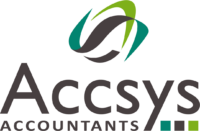
The Spring Budget took place on the 15th March 2023 and it has to be said, on the face of it, was not that exciting. That said, it was predictable given the mess Kwhasj’s budget made.
The key headlines for business owners are:
- Corporation Tax Rate increase to 25% going ahead.
- Return of “associated company rules” – impacts your Corporation Tax Rate if you have more than one company.
- Pension contributions annual allowance increased to £60,000 and Lifetime Allowance removed.
- Announcement of “Fully Expensed” Capital Assets
- Changes to R&D scheme
Corporation Tax Rate increase to 25%
This measure was confirmed from the previous budget but there may be some confusion on what it actually means for your business.
To simplify this:
- If your business earns less than £50K profit you will continue to pay tax @ 19%
- If your business earns over £250K then you will pay tax at 25%.
- Any profits between £50K and £250K you will pay tax at 26.5%.
Example 1
If your business earns £100K profits before tax, you will pay –
£50,000 @ 19%
£50,000 @ 26.5%
Total Tax (£9,500 + £13,250) = £22,750 a combined tax rate of 22.75%
Example 2
If your company makes a profit of £200K you will pay –
£50,000 @ 19%
£150,000 @ 26.5% = £39,750
Total Tax (£9,.500 + £39,750) = £49,250 a combined tax rate of 24.6%
Return of “associated company rules”
Because Corporation Tax is now calculated on different rates these bands will now be reduced by associated company rules.
If you, or any other controlling shareholder of the business, can be deemed to have direct or indirect control of more than one limited company, those companies become associated for Corporation Tax purposes and the values in the bandings must be apportioned between them.
So, the £50,000 – £250,000 bands are reduced by the number of associated companies.
Pension contributions annual allowance increased to £60,000 and Lifetime Allowance removed.
Something to get excited about if you have maxed out your pension contributions.
From 6 April 2023 an individual can contribute up to £60,000 per year to a pension without tax consequence. It has long been our advice that the most beneficial way to pay into a pension is with an employer contribution direct from the company to the pension. The saving here is the corporation tax for the company.
This was a strange announcement as most small businesses already gain 100% relief on assets purchased through the Annual Investment Allowance. We do not anticipate this announcement having any effect on 99% of our clients.
Changes to R&D scheme
The R&D Tax Relief scheme has several changes being implemented in 2023. These measures aim to tackle abuse of the scheme and bring in additional rules stating that the reports supporting the claim must include:
- The additional information forms will have to break the costs down across qualifying categories and provide a description of the R&D.
- Each claim will need to be endorsed by a named senior officer of the company.
- Companies will need to inform HMRC, in advance, that they plan to make a claim. They will need to do this, using a digital service, within 6 months of the end of the period of account to which the claim relates. Claim notification will only be required where a customer has not made an R&D claim during the period of three years, ending with the day before the first day of the claim notification period.
- Additional information and claim notification forms will need to include details of any agent who has advised the company on compiling the claim.
- The additional information form will be required for all claims made on or after 1 August 2023.






